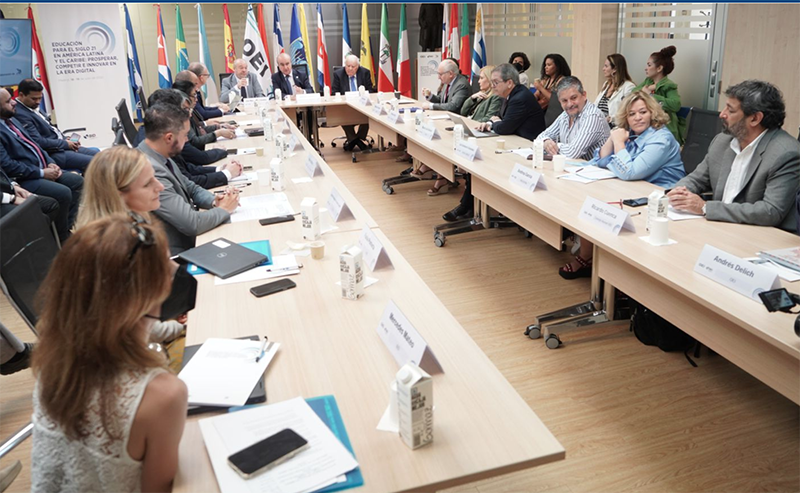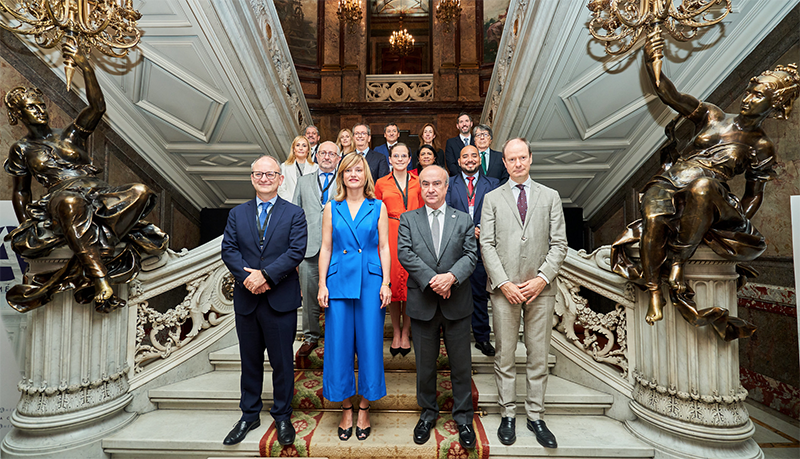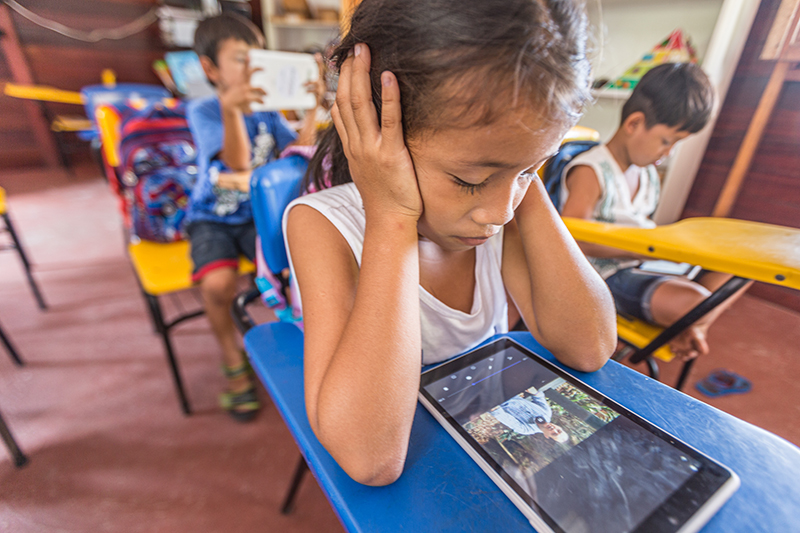Artificial intelligence, climate change, changes in the nature of work and in the demographic composition of the world’s population… The technological changes imposed by the fourth industrial revolution (4IR) and, from 2020, by the COVID-19 pandemic mean that people need to equip themselves with new tools to face these and other global challenges that have emerged and will continue to emerge in the coming years. Education is the only way we can do this. But it must be an education suited to the new context and the new society. For just as we no longer travel in horse-drawn carriages or use leeches for healing, we can no longer educate our children in the same way we did 200 years ago. However, education has been one of the sectors most resistant to change.
Turning back is not an option
In this regard, the pandemic confronted us with a whole world of possibilities. The system was forced to innovate and introduce new ways of teaching and learning involving new technologies. It was an “emergency virtualisation” (Cruz Aguayo et al., 2021), but it started an innovative impetus that we must take advantage of. Because impetus cannot be reversed. This is one of the most important challenges of the post-pandemic world: not to let all that has been achieved be lost, and to regain the positive capacity for innovation to digitally transform our education systems. Harness the great advantages and possibilities of digital education to achieve equitable and quality education for all girls and boys around the world.
But how should digital transformation be approached? How can this be done in a joint and coordinated manner? To try to answer these questions, education ministers from Ibero-America met with specialists and experts in the field at the international seminar “Education for the 21st century in Latin America and the Caribbean: thriving, competing and innovating in the digital era”, jointly organised by the Inter-American Development Bank (IDB) and the Organisation of Ibero-American States (OEI). There, they talked about how to implement hybrid education in Latin American education systems: solutions, challenges and opportunities for implementation, artificial intelligence, platforms, resources and curricula.
The impact of inaction
The huge digital gap that exists among Ibero-American countries became evident during the pandemic and was evidenced by the uneven and disparate emergency measures that were put in place in the countries to tackle learning loss, while at the same time addressing connectivity and access problems. According to IDB figures cited by Mercedes Mateo, head of the IDB’s education division, at least 77 million people do not have quality access to the Internet in rural areas of Latin America and the Caribbean, and the probability of young people between the ages of 12 and 17 dropping out of school has increased by 13%. 40% of students lack basic skills in mathematics (which hinders the acquisition of other basic 21st century skills, such as computational thinking). Completion rates and apprenticeships are also low, and levels of inequality by economic status are high.
It is urgent to do something, not only because it is a situation of social injustice that cannot be prolonged over time. The education gap and problems with the quality of education are also a heavy burden that compromise the future of new generations: according to some studies, young people in Latin America and the Caribbean will have a decrease in their annual income of between 15,000 and 30,000 dollars over their lifetime due to lower educational achievement. This translates into a $760 billion impact on the region’s economy, equivalent to 17% of GDP.
Urgent things come first. Then address the important things
For Mariano Jabonero, secretary general of the IEO, in public policy matters it is necessary to distinguish between what is urgent and what is important. The outbreak of the pandemic made us respond to the urgent issues with emergency mechanisms that would allow us to alleviate the situation in a comprehensive manner. However, in Latin America, the key tools were missing: quality, equity and inclusion. Once the urgent situation has been stabilised and normalised, the focus should be on what is important: that the region must have “a hybrid education proposal that will also improve productivity (which has not improved for 60 years) and help us prevent new pandemics”.
OEI and IDB: united in the commitment to hybrid education

Countries in the region are taking steps in this direction and have joined the regional strategy launched by the IDB and the OEI to develop hybrid education models in Latin America and the Caribbean. Specifically, it is a series of workshops that focus on strengthening national education systems and on aspects such as the skills and competencies of each country’s context, the flexibility of their curricula and the new ways of learning that have been promoted in each region since the pandemic. The project is currently in the pilot implementation phase, which will be used to expand the hybrid systems to other countries.
The initiative, which is being developed in nine countries (Argentina, Bolivia, Brazil, Colombia, Ecuador, Guatemala, Honduras, El Salvador and Mexico), aims to be extended to the entire region within the Regional Programme for Digital Transformation in Education, which the OEI launched at the end of 2021, and which, in addition to the IDB, has important allies such as the Development Bank of Latin America (CAF), the Spanish Agency for International Cooperation (AECID), the Complutense University of Madrid and ProFuturo.
Four key ingredients for successful hybrid education
The IDB has identified four ingredients to make hybrid education a reality (Arias Ortiz et al., 2020). Let’s see what they are:
- Equipment and internet connectivity. As mentioned above, gaps in access to internet connection and devices remain a challenge in LACs, both in schools and at home. While governments have made significant efforts to expand access, more structural measures are needed to ensure continuity of access.
- New skills and teaching profile. Hybrid education confronts teachers with a new educational model that puts the learner at the centre and focuses on competencies and the adoption and use of new technologies. “Technology has to transform pedagogy and allow the teacher to play new roles, as a mediator, to support student development and construction of knowledge, instead of being a simple transmitter of content, a conveyor of information to students”.
- Content and platforms. In the hybrid education model, the curriculum should be prioritised and made more flexible, focusing efforts on Mathematics and literacy, as well as on 21st century skills. In this regard, there is a wide range of platforms, software and content which must be integrated with other non-digital strategies and adapted to students’ access and Internet connection conditions. ProFuturo is an example of such efforts.
- Informing and monitoring students. In order for governments to make informed decisions, and to monitor and evaluate student learning in order to improve and/or adapt content provision, they must keep good track of student track records. This is achieved through what are known as Education Information and Management Systems (EIMS).
Artificial intelligence in education
No discussion of hybrid education systems would be complete without referencing artificial intelligence applied to education. In this respect, Magdalena Brier, CEO of ProFuturo, referred to the great importance of highlighting the enormous amount of data generated by the use of technology in education: “The use of information platforms and systems generates and makes available a wealth of data. What we need to do is to get all this data to help us create intelligent education systems by developing algorithms that can help us analyse the information, suggest necessary changes and improve processes. It is also necessary, she said, to “define and work on algorithms by putting ethics at the centre“. The Latin American and Caribbean region is ready for artificial intelligence in education, but there is a need to develop regulation and legislation to ensure that artificial intelligence is at the service of humankind.
Today more than ever, the way people are educated and trained will determine whether or not the countries of the region will be able to transform themselves and offer greater opportunities and prosperity for all.
REFERENCES
Arias Ortiz, E. et al. (2020). From distance to hybrid education: 4 key elements to make it happen. Focus on Education (Blog).
https://blogs.iadb.org/educacion/es/eduhibrida/
Cruz-Aguayo, Y. et al. (2021). Towards a digital transformation of the education sector. Learnings from emergency virtualisation. IDB.






